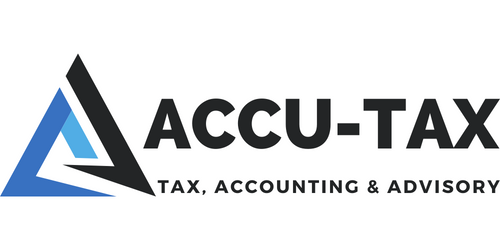
The IRS’s authority to seize funds from a joint bank account when only one account holder owes back taxes is governed by several provisions of the Internal Revenue Code (IRC), Treasury Regulations, and case law. Below is a comprehensive analysis of the legal basis, determination of ownership, and remedies available to non-liable account holders, including the procedures for wrongful levy claims and the applicability of Innocent Spouse Relief.
- Legal Basis for IRS Levy on Joint Bank Accounts
- Statutory Authority
- IRC § 6331(a): The IRS may collect unpaid taxes by levy upon “all property and rights to property (except such property as is exempt under section 6334) belonging to such person or on which there is a lien provided in this chapter for the payment of such tax.” This includes bank accounts, even if held jointly, provided the taxpayer has an interest in the account [1].
- Application to Joint Accounts
- The IRS can levy a joint account if the delinquent taxpayer has a property interest in the account under state law. The Supreme Court in United States v. National Bank of Commerce held that the IRS may levy on a joint account to the extent of the taxpayer’s interest, which is determined by state law [6].
- Statutory Authority
- Determining Ownership of Funds in a Joint Account
- State Law Controls
- The extent of the taxpayer’s interest in a joint account is determined by state law, not federal law. The IRS and courts look to state law to decide whether the taxpayer has an “unrestricted right to withdraw funds” from the account [6].
- Presumptions and Rebuttal
- Presumption: If the taxpayer has an unrestricted right to withdraw funds, the IRS may initially presume the entire account is subject to levy [4].
- Rebuttal: Co-owners can rebut this presumption by providing evidence of their ownership interest, such as the source of funds, intent, and actual control over the account [3].
- Relevant Factors
- Nature of the tenancy (e.g., joint tenancy, tenancy by the entirety)
- Source of deposited funds
- Intent of the parties
- Actual control and use of the account [3]
- Special Cases
- If the account requires multiple signatures for withdrawal (e.g., “A and B”), and the taxpayer cannot unilaterally withdraw funds, the IRS cannot levy the account for that taxpayer’s debt [6].
- State Law Controls
- Steps for Non-Liable Account Holders to Protect or Recover Their Share
- Before the Levy
- Co-owners should maintain clear records of their contributions and the purpose of the account.
- If possible, structure the account to require multiple signatures for withdrawal, limiting unilateral access by the taxpayer.
- After the Levy: Wrongful Levy Claims
- Administrative Relief (IRC § 6343(b)): If the IRS wrongfully levies property, a non-liable party may request the return of the specific property, an equivalent amount of money, or the proceeds from the sale of the property. The IRS may return the property at any time, but monetary amounts must be claimed within two years of the levy [2].
- Judicial Relief (IRC § 7426): A non-liable party may file a wrongful levy suit in federal district court to recover their interest in the levied property. The suit must be filed within nine months of the levy [8].
- Burden of Proof
- The non-liable account holder must prove their ownership interest in the funds. Evidence may include deposit records, account agreements, and testimony regarding the intent and use of the account [7].
- Due Process Protections
- Courts have held that due process requires the IRS to provide notice to co-depositors and an opportunity to assert their ownership claims before the funds are surrendered to the IRS, or to allow a post-levy remedy [7].
- Before the Levy
- Procedures for Filing a Wrongful Levy Claim under IRC § 6343(b)
- Administrative Claim
- File a written request with the IRS office that served the levy, identifying the property and explaining why the levy was wrongful.
- Provide evidence of ownership (e.g., bank statements, deposit records, affidavits).
- Timeframe: For monetary claims, file within two years of the levy; for return of specific property, there is no time limit [2].
- Judicial Claim (IRC § 7426)
- File suit in federal district court within nine months of the levy.
- Name the United States as the defendant.
- Prove ownership interest in the property and that the levy was wrongful as to that interest [8].
- Administrative Claim
- Defenses and Additional Remedies
- Innocent Spouse Relief
- Not Directly Applicable: Innocent Spouse Relief under IRC § 6015 is designed to relieve a spouse from joint and several liability for tax on a joint return, not to protect a non-liable co-owner of a joint bank account from levy. However, if the tax debt arises from a joint return, and the non-liable spouse qualifies, they may seek relief from the underlying liability, which could indirectly affect the IRS’s ability to levy [5].
- Tenancy by the Entirety
- In some states, property held as tenants by the entirety (typically by married couples) cannot be levied for the tax debt of only one spouse. The IRS cannot seize such property unless both spouses are liable [6].
- Other Defenses
- If the taxpayer does not have a unilateral right to withdraw funds, the IRS cannot levy the account [6].
- If the funds are proven to belong solely to the non-liable party, the IRS must release the levy as to those funds [3].
- Innocent Spouse Relief
- Summary of Key Procedures
- IRS may levy a joint account if the taxpayer has an interest, as determined by state law.
- Presumption of equal ownership may apply, but can be rebutted by evidence.
- Non-liable co-owners can file administrative or judicial wrongful levy claims to recover their share.
- Timely action is critical: two years for administrative monetary claims, nine months for judicial claims.
- Innocent Spouse Relief is not a direct defense to levy on a joint account, but may be relevant if the underlying liability is joint.
![]() Reference
Reference
[1] Sec. 6331 – Levy and Distraint
[2] Sec. 6343 – Authority to Release Levy and Return Property
[4] ECC 201115022 (Chief Counsel Advice)
[6] Gaster v. IRS, 42 F.3d 787 (3d Cir. 1994)
[7] United States v. National Bank of Commerce, 472 U.S. 713 (1985)
[8] Knies v. Commissioner, 952 F.2d 403 (10th Cir. 1992)

